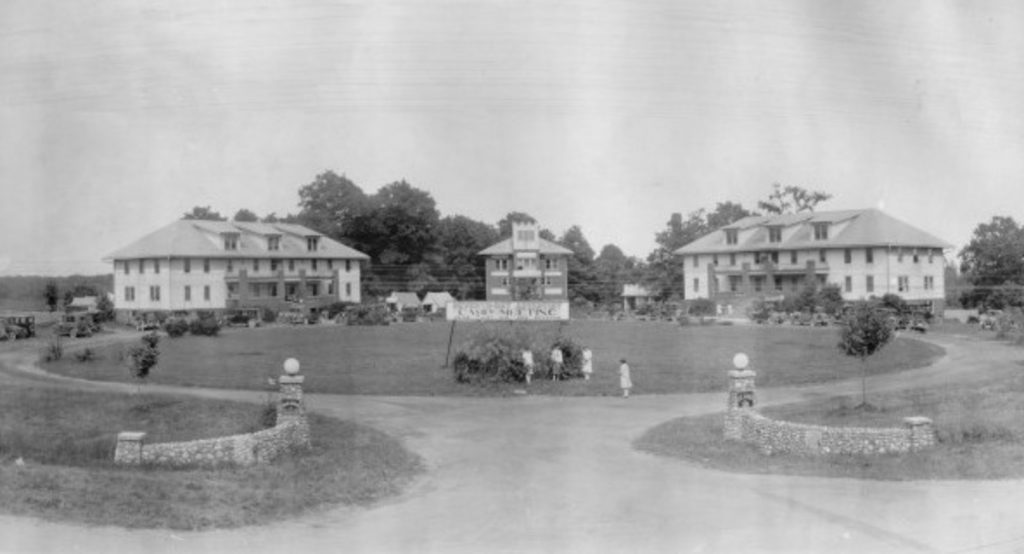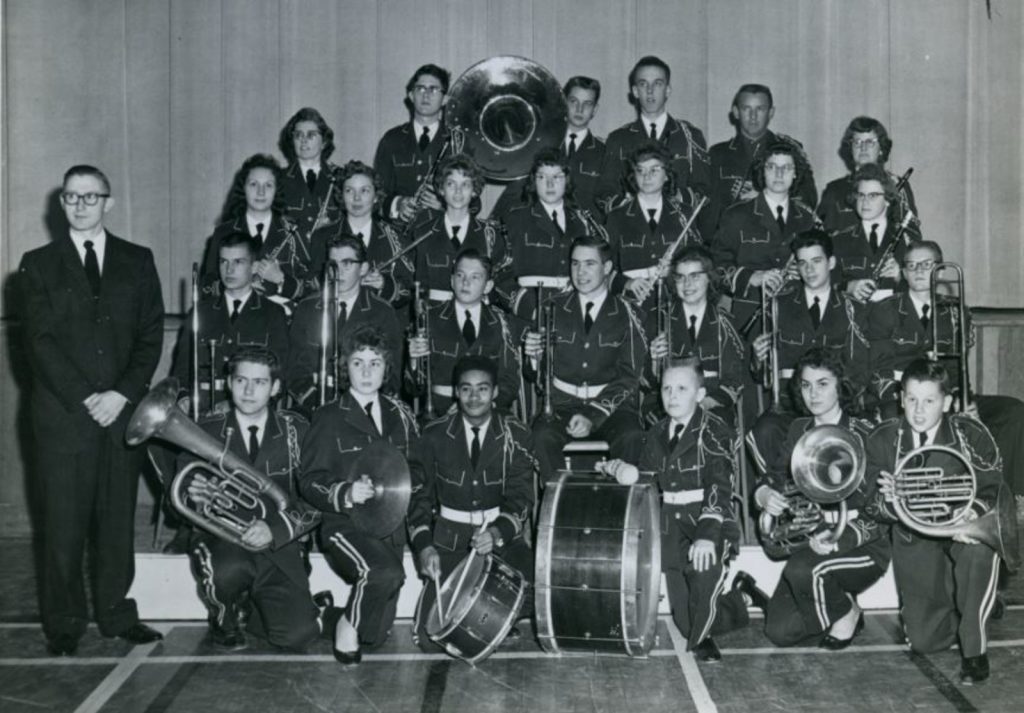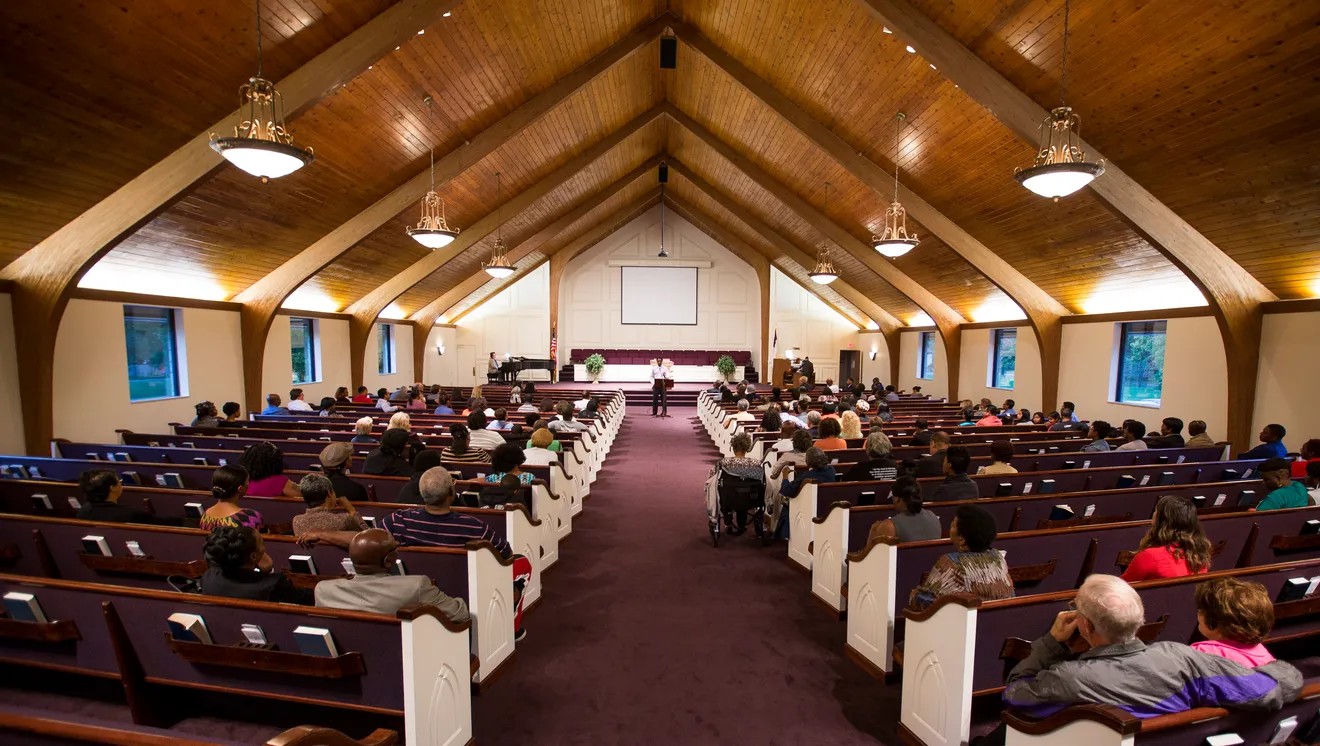The Seventh-day Adventist (SDA) church was organized in 1863 by former adherents to the Millerite movement, which predicted (from Bible prophecy) that Jesus would return to earth in 1844. Today, Adventists hold much in common with other conservative Christians, believing in salvation through Jesus Christ, the ultimate revelation of God’s character. They also expect an early return of Jesus bringing judgment, emphasize health for the total person, and stress observance of the seventh day (Sabbath).

The church in Indiana was mainly rural until after the Indiana Conference was organized in 1872. In 1876, Arthur Bartlett formed a Sabbath School in Indianapolis. In 1885, a “city mission” and lecture room were opened on Cherry Street, and a congregation was organized in 1888. Ellen White (regarded as a prophetess by most Adventists) and evangelist Alonzo T. Jones visited Indianapolis in 1889, and several camp meetings were held on the north side of the city.
In 1902, the Seventh-day Adventists established a school at Boggstown in Shelby County. Originally called the Boggstown Manual Training Academy, the institution moved to a grove near Fairland, and the name was changed to Beechwood Manual Training Academy in 1903. The school moved to Cicero in Hamilton County in 1921 and became the Indiana Academy of Seventh-day Adventists.

At the turn of the century, there were nearly 200 Adventists in Indianapolis and, by 1907, the original congregation had moved to Central Avenue and 23rd Street (the “Octagon Church”). Most early SDAs were strongly against slavery; African Americans were accepted into their churches. Adventist work specifically among Blacks in Indianapolis began in 1907 when L. W. Browne and William Green won 15 converts through tent meetings. A building was purchased in 1911. The Southside Seventh-day Adventist Church began as the Rural Street Church in about 1907. In 1923, this group constructed a building at Orange and Laurel streets.
In the 1930s, the original congregation purchased the former Eliza A. Blaker School property at 23rd and Alabama streets. During this time, rapid growth of the African American congregation, under the leadership of J. H. Laurence, led to construction of a new building on Capitol Avenue. In 1945, separate Black conferences were formed for most of the United States to give African American Adventists more control over their own church affairs and provide more opportunities for talented Black pastors. The Capitol Avenue Church then joined the new African American Lake Region Conference.

By 1950, Adventist membership in Indianapolis totaled over 700. In 1962, the first congregation moved to its present location near Rural and East 62nd streets and became known as the Glendale Seventh-day Adventist Church. The Southside SDA Church, which has planted four new churches since 1950, moved to its present location at 4801 Shelbyville Road in 1973. In 1977, the African American congregation moved to 1801 East 49th Street as the Capitol City Seventh-day Adventist Church.
In 1990, Indianapolis hosted the General (world) Conference of SDAs, reporting a predominantly third-world church with over 6 million members and an extensive network of schools and medical enterprises. At this time, there were 11 churches with nearly 2,500 members in Indianapolis which supported three schools. By 2010, there were 14 congregations and over 4,000 members. In 2020, the SDA presence in Indianapolis had grown to 17 congregations, including 4 predominately Hispanic churches as well as the Indianapolis Korean Seventh-day Adventist Church, located in Zionsville, and counted nearly 6,000 members. The denomination continues to support the Indiana Academy of Seventh-day Adventists, on its 100-year-old, 500-acre campus near Cicero, and four other schools in the Indianapolis MSA.
Adventists place great emphasis on education at all levels and often pursue higher education in SDA schools. Unusual numbers are physicians and other professionals, although occupational diversity is the rule in Indianapolis churches. Relations between Black and white Adventists are cordial, and members transfer freely among churches regardless of race. Women serve many churches as leaders and elders, and women pastors, although they are not currently ordained, may baptize and perform marriages.

Help improve this entry
Contribute information, offer corrections, suggest images.
You can also recommend new entries related to this topic.
